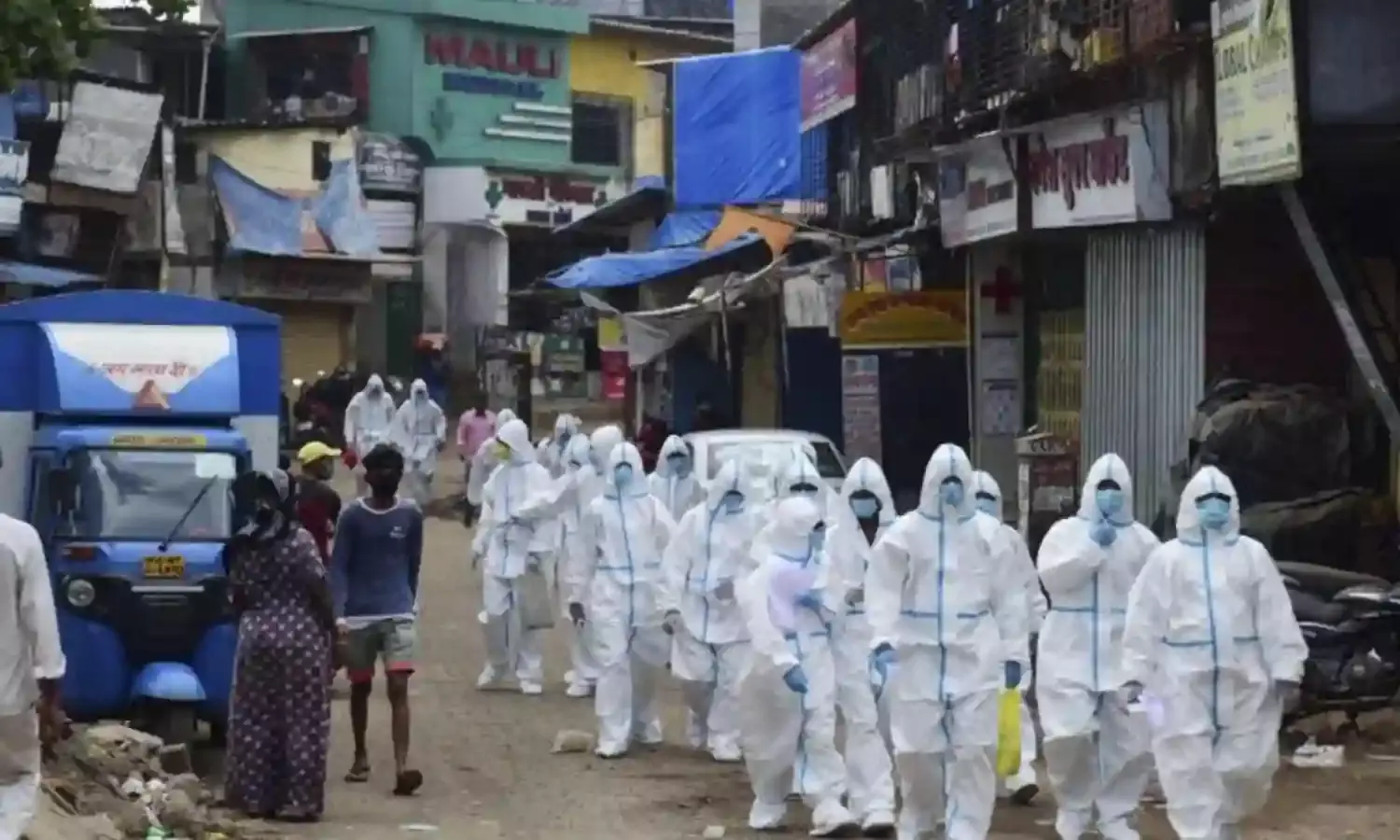So What Changed in Dharavi?
Asia’s biggest slum Dharavi in the Covid Pandemic

As the nation-wide lockdown was suddenly announced in March, Aatma Devi – a poor slum dweller in Dharavi – found herself battling against all odds.
But she was not alone.
The 8-9 lakh slum dwellers in Dharavi faced the same struggle.
With the first case reported in April, Dharavi turned into a COVID hotspot. Despite being located in Mumbai – The City of Dreams – the pandemic would further jeopardise several living realities in Dharavi.
The abject poverty, overcrowding, and lack of sanitation facilities in Dharavi made it an alarming challenge to immediately tackle. 80% of Dharavi’s population depended on community toilets, worsening the situation further for residents like Atma Devi.
“We did not have money, even to pay for loos. Many of us, in this state of pennilessness and abandonment, used the polluted garbage disposal areas for toilet purposes,” she said.
Several stories like hers have gone unreported.
How could families, living in eight-by-eight foot rooms be quarantined? How would these daily-wage labourers earn their livelihood? How would sanitisation be carried out in alleyways with poor drainage and sewage facilities?
The normalisation of Dharavi’s reality – poverty, labour abuse, lack of sanitation condition, poor unhygienic quality of life, domestic abuse, child labour – within India’s democratic functioning is not new. Though interestingly, the pandemic worsened it further.
Several firms in Mumbai specifically discontinued the services of these slum dwellers, forcing thousands of them to return to their native towns. A new form of stigmatisation emerged, as if Dharavi hadn’t suffered before.
“After the factories in Dharavi were shut down in the lockdown, 95% of the slum dwellers, 6 to 8 lakh, left Mumbai. With no money, no jobs, the exodus of Dharavi residents continued till June end,” revealed journalist Kavitha Iyer.
The pandemic reduced the alleyways in Dharavi into ghost streets. The long-lasting impact of this exodus would continue to haunt the livelihoods of the slum- dwellers for months to come, as futuristic employment opportunities remain tentative.
Iyer’s empirical fact-finding reports have revealed how Gulzar Waqar Khan (33), a denim good trader in Dharavi, helped in distributing ration every night. His effort helped in curbing long queues, as his door-to-door distribution was supported by Mumbai Police and Praja Foundation.
But suddenly, fighting against all odds, Dharavi transformed from being a challenge into a model. The recent report by Brihanmumbai Municipal Corporation (BMC) reveals how coronavirus tally in Dharavi has reached to 2392, with only 86 active cases.
Even the World Health Organisation has applauded the Dharavi model.
So, what changed?
How was the disease transmission controlled in Dharavi, where self-isolation and quarantine is impossible?
“To start with, BMC conducted the large-scale public screening. The voluntary private medical practitioners were immediately mobilised and necessary PPE kits were given to them,” Dr. Neelam Gorhe, Deputy Chairman of Maharashtra Legislative Council said.
As there is no hospital inside Dharavi, the help of nearby hospitals like Family Care, Prabhat Nursing Home, and Sai Hospital was also taken. 90% of patients were treated in these nearby hospitals and other halls, sports stadiums, schools temporarily acquired by BMC.
“Instead of waiting for patients to come out, large-scale pro-active screening was conducted to chase the virus. With 6-7 lakh people screened, the vulnerable population was detected at an early stage. Out of the home-to-home screening done, 47,000 households (20% of the population) were found positive. The screening took place through thermal scanner and pulse oximeter,” Dr. Chaitanya Patel said.
Along with several NGOs, civil societies like Action Aid, 360 private practitioners also joined in.
“It is not the first time when Dharavi has faced such a challenge. The bubonic plague of 1896, killed half of the population of today’s Mumbai,” Professor Brinelle D'Souza said.
With the immediate screening, quarantine in nearby schools and creation of fever clinics, Dharavi was able to flatten the curve.
“A 200-bed set-up was done in every hospital near Dharavi with proper isolation measures being followed. However, BMC has not stopped disclosing COVID deaths in the area,” she further added.
As far as slum dwellers like Aatma Devi are concerned, NGOs like Action Aid have helped her.
“Today, I go door-to-door to distribute ration. But why did the state not intervene? Why were we not taken care of? Why was the lockdown imposed without a framework?” questioned Aatma Devi.
Her questions receive no answers. What would happen to those who left?
As the ‘new normal’ created by the pandemic continues to stay for a foreseeable future, it is also necessary to ponder how to complete this ‘Dharavi model’ is?
The massive exodus of the daily wage earners of Dharavi needs policy intervention so that their livelihoods do not continue to be marginalised.
*The quotes in the report are from the panelists who took part in a webinar on ‘How Dharavi did it! The journey of a “challenge” to a “model” organised by Action Aid.
Cover Photograph Press Trust of India (PTI)



